Asustor AS6204T Braswell NAS Review
by Ganesh T S on November 5, 2015 8:00 AM ESTEncryption Support Evaluation
Consumers looking for encryption capabilities can opt to encrypt a iSCSI share with TrueCrypt or some in-built encryption mechanism in the client OS. However, if requirements dictate that the data must be shared across multiple users / computers, relying on encryption in the NAS is the best way to move forward. Most NAS vendors use the industry-standard 256-bit AES encryption algorithm. One approach is to encrypt only a particular shared folder while the other approach is to encrypt the full volume. Asustor supports folder-level encryption only.
On the hardware side, encryption support can be in the form of specialized hardware blocks in the SoC (common in ARM / PowerPC based NAS units). In x86-based systems, accelerated encryption support is dependent on whether the AES-NI instruction is available on the host CPU. As mentioned in the first section, one of the adantages of Braswell is the presence of AES-NI even in the Celeron SKUs. The N3150 does have AES-NI support, and we should not be seeing much penalty in the performance of the encrypted shared folders.
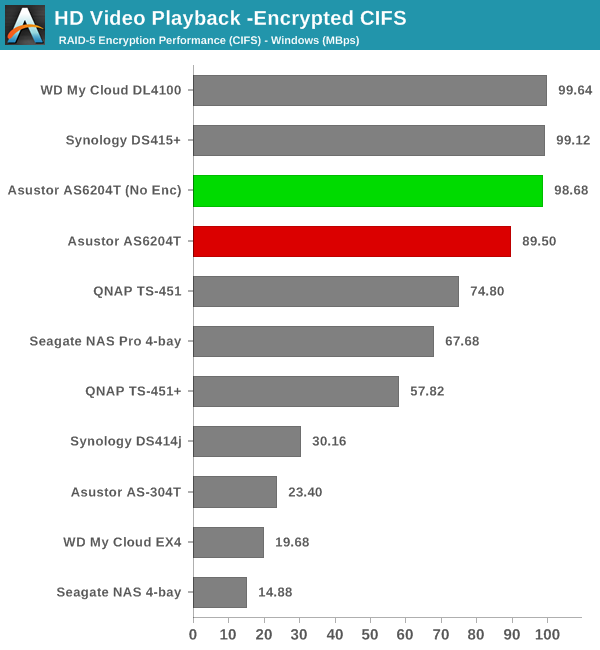
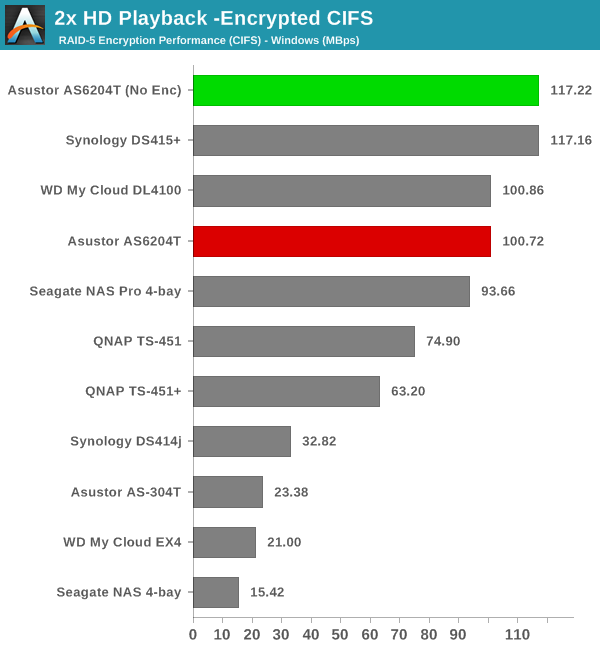
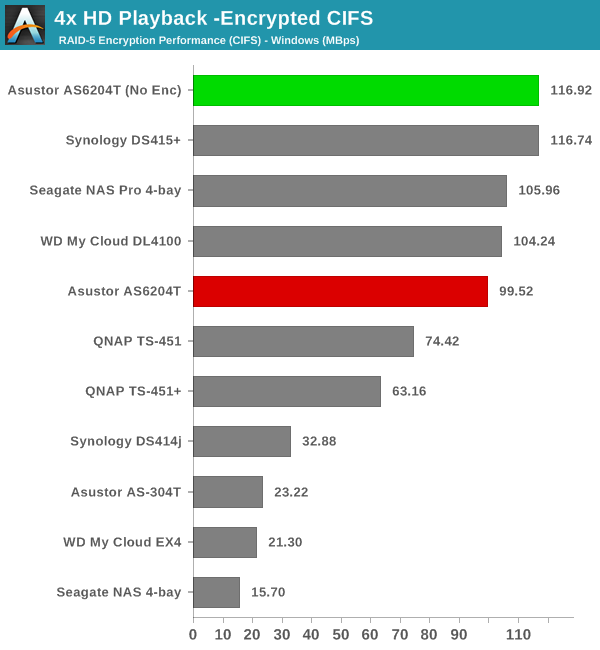
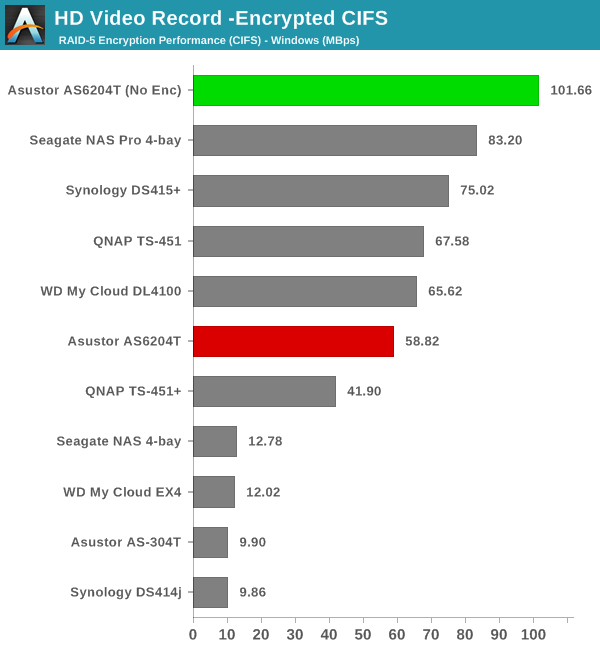
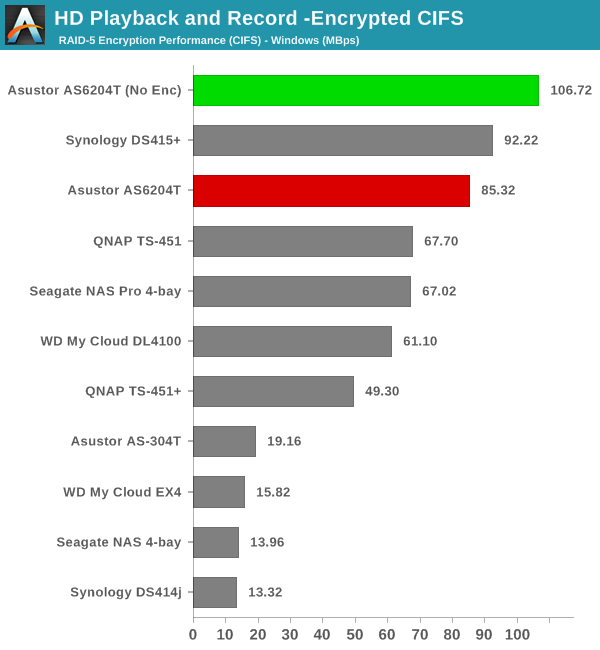
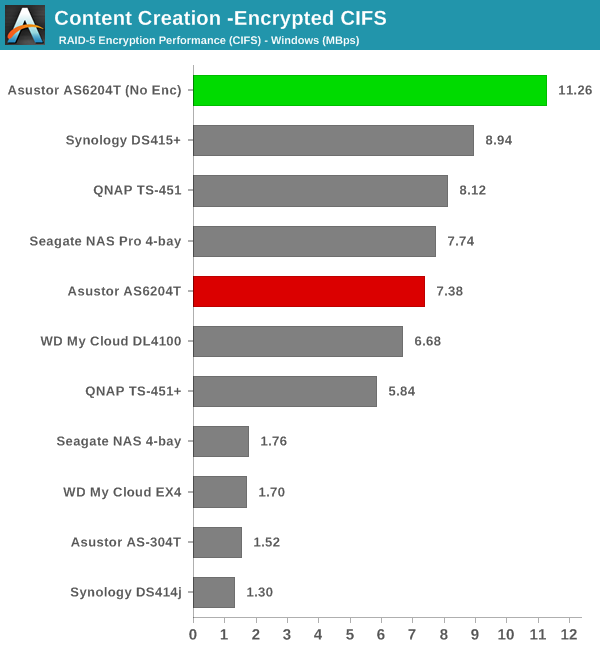
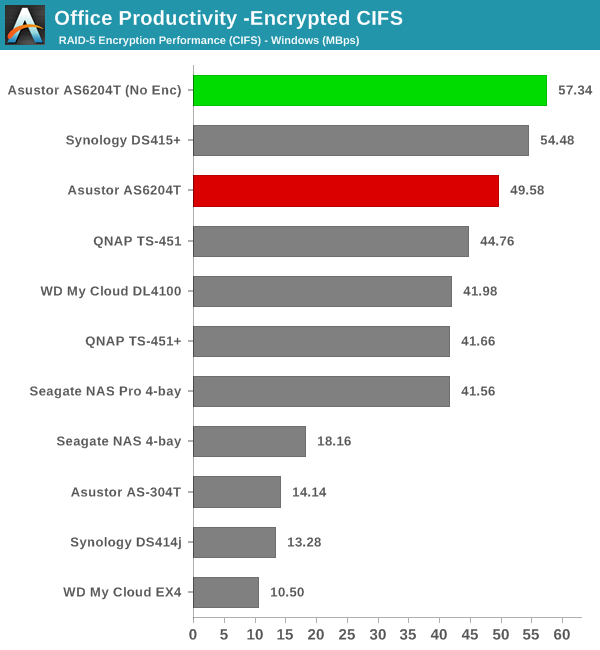
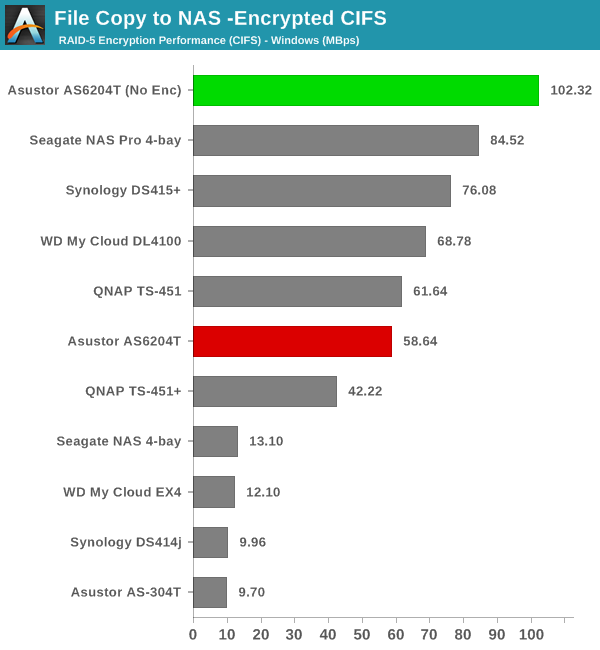

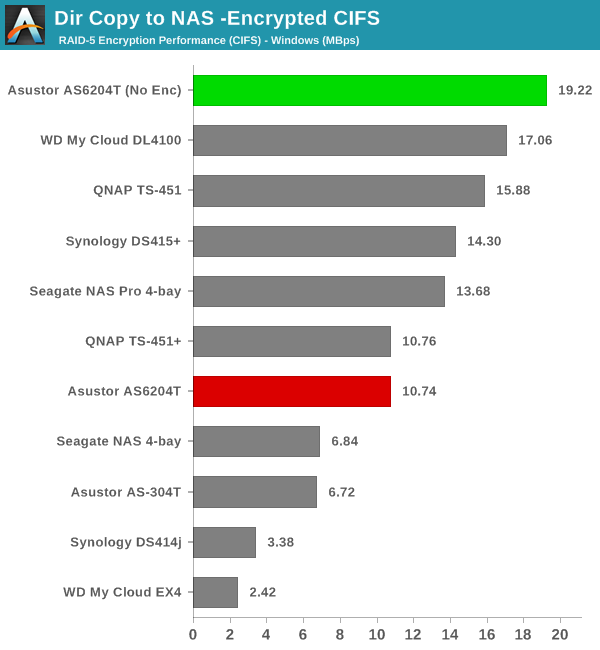
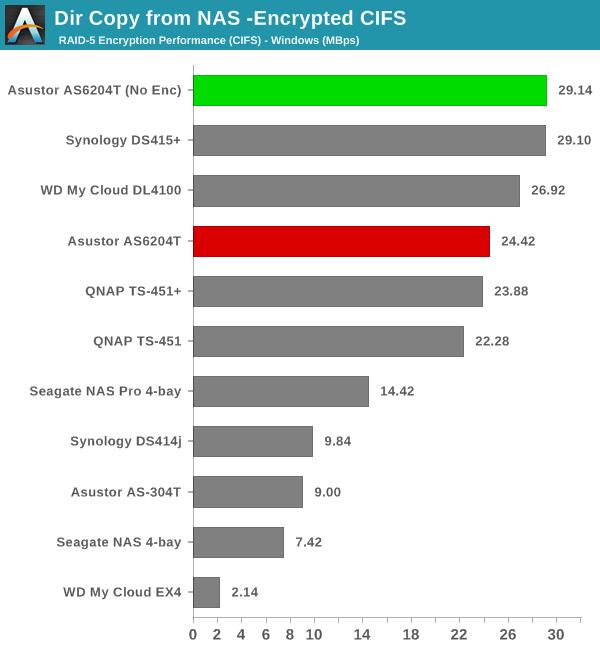
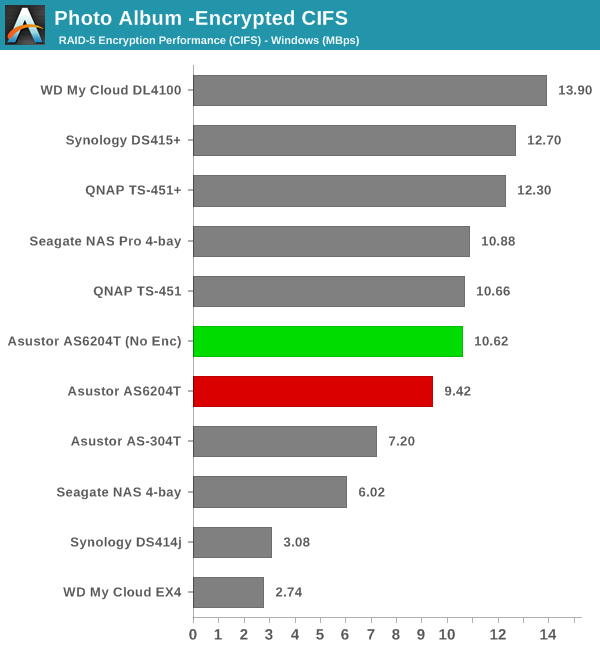
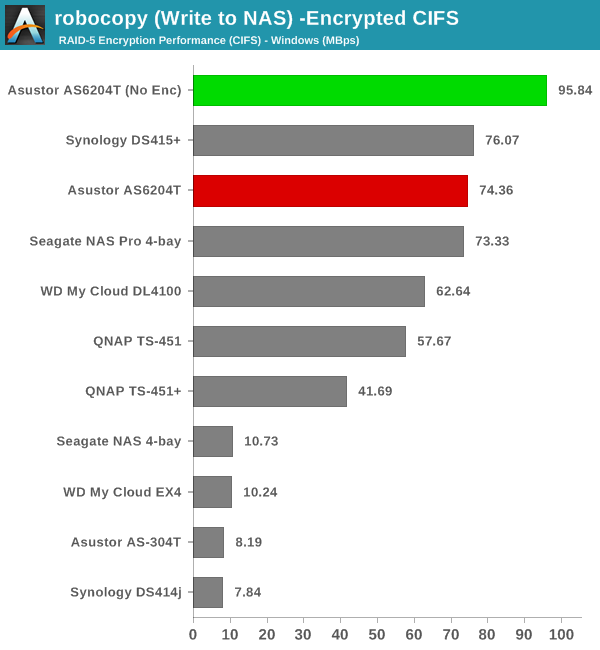
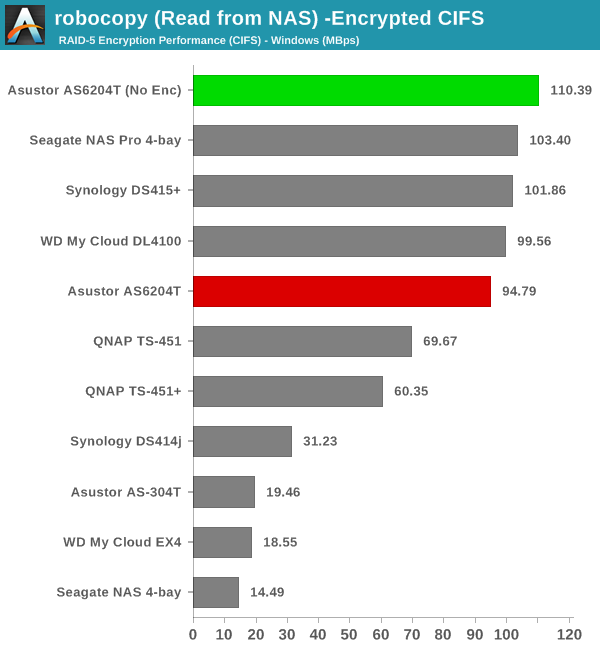
First off, the presence of AES-NI ensures that we don't have abysmal performance for any workload. Moving on to the performance penalties, we find performance loss to be in the order of 10 - 15% for read-intensive workloads to as much as 40 - 50% for write-intensive ones. Again, there is some scope for optimization in ADM for these scenarios.










29 Comments
View All Comments
Der2 - Thursday, November 5, 2015 - link
Nas life.zeeBomb - Thursday, November 5, 2015 - link
I have heard a lot about these surverlliance stations for quite some time now...appears to be the next big thing. Thank YOU for delivering these results!asendra - Thursday, November 5, 2015 - link
I'm hoping Sinology releases in 2016 a 4bay braswell NAS, a DS416+ if you will, hopefully with a N3700. They have already announced some 2016 models with braswell, just not the ones I want.I would buy the current DS415+, but because I'm in no need of one right now, I just hope they get to it before I need to make the purchase.
galfert - Thursday, November 5, 2015 - link
I think the DS716+ is the device to get this year. No need to wait for a DS416+. If you need more than two drives you can get the 5 bay expansion model for the DS716+. That is why it is called a DS7xx+ model...because you can have 7 drives. So it is better than a DS4xx model which can't support the expansion module.For me the DS716+ is the device I've been waiting for. Powerful Intel CPU, Expandable RAM, Expansion module support, Transcoding of video, virtualization support, Hardware Encryption support. It has everything I need. Previously you had to compromize. I have a DS214play and a DS713+ and the DS716+ can replace both of them.
asendra - Friday, November 6, 2015 - link
You know, I hadn't considered that option. It would be a more expensive one, but it could work, in fact I could use a dx213 instead, wich gives me plenty storage for my needs.If when I need to buy one this next year they haven't released yet the new 4bay braswell ones, I might go with this option instead of the older ds415+.
Another thing I wanted to wait for so I could see how it develops It's Btrfs support.
DanNeely - Thursday, November 5, 2015 - link
Is the rebuild time graph showing numbers in seconds? Hours would be a lot more immediately meaningful. /3600 isn't a particularly easy mental computation.romrunning - Thursday, November 5, 2015 - link
Your article says: "Their Braswell lineup consists of four models, with each model name following the pattern AS6X0YT, where X (1 or 2) refers to the number of cores in the Braswell SoC in the model and Y (2 or 4) refers to the number of bays."Yet the Asustor AS6204T has 4 cores. So by your definition, it should have been named the "AS6404T".
So it sounds like your definition should be updated.
romrunning - Thursday, November 5, 2015 - link
Forget the above - the wording isn't as clear. I thought you were saying it was a direct relationship where the number = amount of cores. It could have been written that the second numeral denotes whether the CPU is dual-core (X=1) or quad-core (X=2).romrunning - Thursday, November 5, 2015 - link
This also reminds me - with today's advanced CMS/commenting systems, why can't we edit or delete our own comments on Anandtech??DanNeely - Thursday, November 5, 2015 - link
Which editor/reviewer do you want to furlough to hire a web developer to replace the comment system?